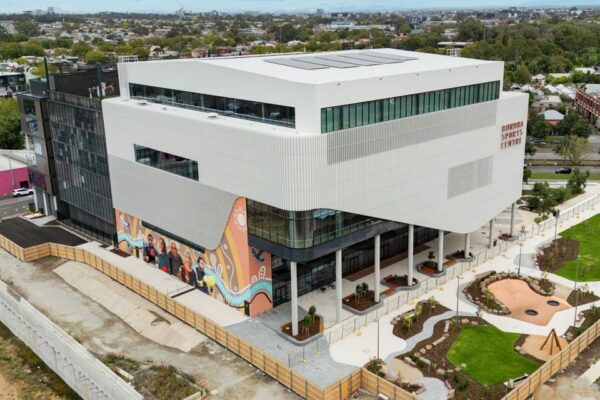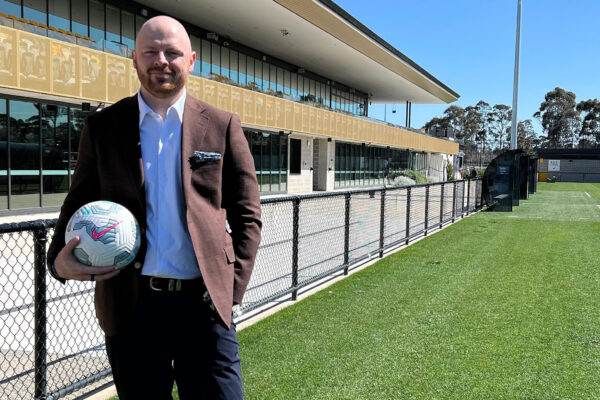
Melbourne Victory dropped a bomb on the A-Leagues when it announced its new partnership with StatsBomb – a name that will be unfamiliar to most Australian football fans.
However, whilst the name might be new, the pursuit is not.
As the role of data analytics continues to rise in football, many clubs and organisations are still coming to grips with how to best process and present that data and how to use it to make tangible differences on gameday.
 In StatsBomb, Melbourne Victory will certainly hope they have gained an advantage on the competition.
In StatsBomb, Melbourne Victory will certainly hope they have gained an advantage on the competition.
StatsBomb firmly believes it is up for the challenge – and why wouldn’t they?
Already trusted by the likes of Liverpool FC – a club now renowned for its use of data and analytics in improving on-field performance – StatsBomb is enjoying an increasingly growing reputation within the game.
Also counting AS Roma and the Belgian Football Association amongst their clients, StatsBomb international marketing coordinator Nick Dorrington sees an exciting opportunity for the company to enter a new market in Australia with Victory.
“We have customers in over 25 countries around the world but are still expanding our reach in terms of geography and language. It is exciting to get a foothold in a new territory, particularly in a region like Australasia and Asia where we see good opportunities for growth,” Dorrington told Soccerscene.
“As an organisation, Melbourne Victory are determined to turn things around after finishing bottom of the league last season. They are keen to implement change and want to integrate data into all of their processes.
“They are looking for an objective way to track and measure things like performance and style of play, but they also see an opportunity to leverage the additional detail of StatsBomb data to gain an edge on other teams in player recruitment.
“StatsBomb data includes significant additional contextual information that allows for more effective analysis and scouting. Things like goalkeeper and defender positioning on shots, the height of the ball at the moment at which a shot is taken, pressure data at a team and player level and other variables like pass footedness, pass height and various others.
“That allows teams to get a much clearer idea of player behaviour in certain situations. For instance, if you were scouting an upcoming opponent you could look at what kind of passes their central defenders make when put under pressure and find a way of leveraging that information to your advantage.
“The integration of data will be a long-term process for Melbourne Victory, but one that the club should hopefully begin to see the fruit of relatively soon.”
StatsBomb’s emergence in this market come from rather humble beginnings.
CEO Ted Knutson started the business as a blog about football analytics, before being hired to work within football himself.
Once he returned to the open market, he built a team that delivered consultancy services for clubs, where he discovered a constant issue with the limitations of the available event data from football games.
Whilst the use and analysis of data is nothing new in football, Dorrington explained the StatsBomb model differentiated itself because of its proprietary data set, which provides greater context for the numbers and more actionable insights.
“One of the things that our founders consistently came across when they were using the data of other providers was that it lacked important contextual information that experienced football people were easily able to pick holes in,” Dorrington said.
“They would go to a coach with the results of an expected goals (xG) model and the coach would say: “But you don’t know where the goalkeeper is. This is worthless.” Obvious problems like that make it hard to get buy-in on the football side.
“StatsBomb data was created with that in mind. We collect over 3,400 events per match, more than double the amount of some of our competitors, and as I mentioned before our data set includes key additional contextual information that just isn’t found in the data of other companies in this space.
“Our goal has always been and continues to be to create the most football-applicable data set and associated statistical models. Just this year we have already launched StatsBomb 360, a revolutionary new product that provides a snapshot of player locations on each event we capture, and On-Ball Value (OBV), a model that seeks to measure the impact of each on-ball action in terms of its effect on the probability of a team scoring or conceding.”
 One particularly interesting aspect of the StatsBomb model is the measurement of pressure – a metric developed to try and help clubs better understand and quantify the events in a game that create pressure on an opponent.
One particularly interesting aspect of the StatsBomb model is the measurement of pressure – a metric developed to try and help clubs better understand and quantify the events in a game that create pressure on an opponent.
“We record a pressure when a player moves to within a given range of the ball carrier in an attempt to close down the ball. There can be multiple players applying pressure in the same action,” Dorrington said.
“The lack of pressure data was one of the key flaws in the existing datasets before the launch of StatsBomb data. It gives so much more information to work from when assessing defensive contribution.
“To give a widely understood example, if we wanted to analyse Roberto Firmino’s defensive contribution at Liverpool with the previously available event data, we’d only have around three tackles and interceptions to look at for every 90 minutes he’s on the pitch, around 90-100 per season.
“With pressure data, we have an additional 23 or so defensive actions per match, around 750 per season. That is a huge increase and one that allows us to get a much clearer picture of when and where he is involved defensively.”
According to Dorrington, StatsBomb was continuously assessing its model to try and find new-and-improved insights it can provide clubs.
“While there are many clubs who have successfully integrated data into their decision-making processes and who are deriving real benefit from that, there are still many where there is a disconnect between the data people and those who are making decisions and where there isn’t enough of an understanding of how data can be used effectively,” he said.
“Beyond that, there are many emerging markets in which data is barely being used to any meaningful degree. We are committed to providing models and analysis tools that are just as applicable at the top end of the game as in those lower-budget scenarios.
“The teams with the biggest budgets and most qualified personnel will continue to raise the ceiling of possibility but we hope to help democratise data so that teams with less resources still have an opportunity to compete.”
Victory may well be the first cab off the rank in Australia, but they may not be the last.
“It is interesting that since announcing our partnership with Melbourne Victory, we’ve already had a couple of enquiries from other A-League teams,” Dorrington added.
“We often find that’s how it works. You get an early mover in a given league or territory and then others follow.”
You can find out more on StatsBomb and their features here.














